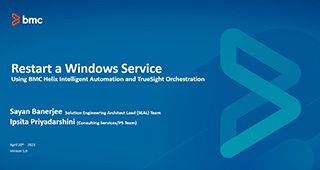This use case will demonstrate how to restart any Windows service using BMC Helix Intelligent Automation with the TrueSight Orchestration connector to help manage all of your IT assets.
Use Case
When a Windows Service down alert comes into BMC Helix Operations Management, the service is restarted automatically using BMC Helix Intelligent Automation.
- In this use case, we are using TrueSight Orchestration (TSO) as the automation tool for Out-of-the-box TSO event orchestration runbook adapters and modules.
- The BMC Helix Intelligent Automation Policy triggers the TSO workflow to remotely restart the Windows service.
- The Windows service gets restarted successfully and the event is closed in BMC Helix Operations Management.
- For this use case, we are restarting the Print Spooler service on a Windows server as an example to demonstrate the flow.
The Event Orchestration Runbook Configuration
The adapters needed for this use case are shown below.
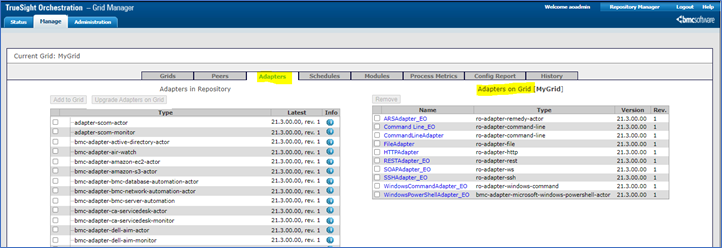
The modules needed for this use case are shown below.
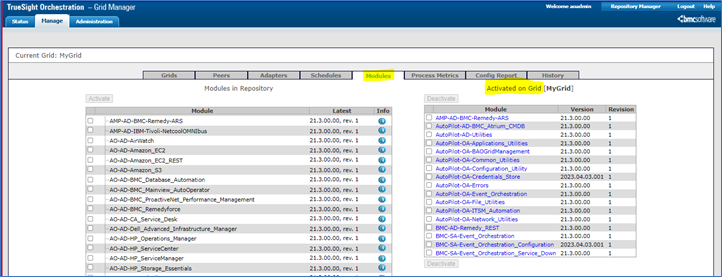
Event Orchestration Module Configuration for BMC Helix Monitor
You will need to make changes for the attributes highlighted below.
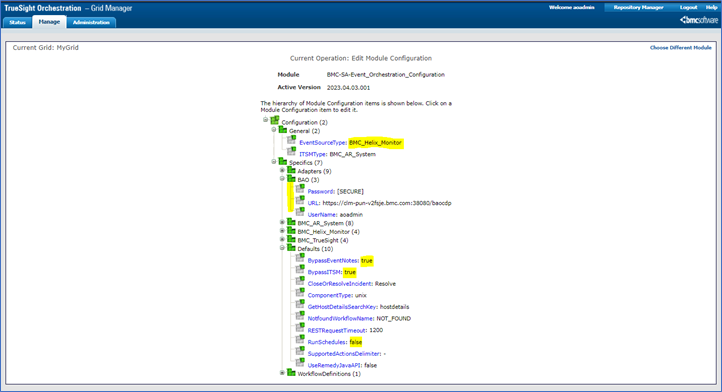
Event Orchestration Credential Store Configuration
Please provide the correct Windows credentials, as shown below.
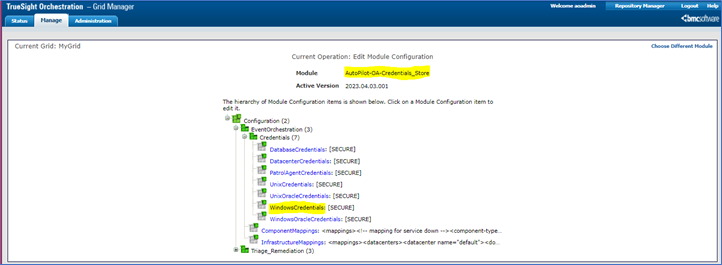
BMC Helix Intelligent Automation
The screens below show the BMC Helix Intelligent Automation Connector, which needs to be configured from the console.

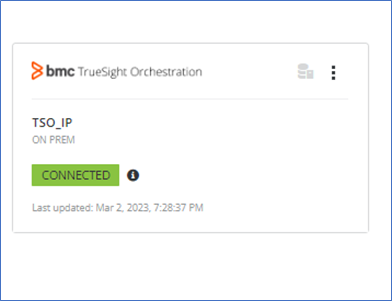
Policy Configuration: BMC Helix Intelligent Automation
You will need to configure the BMC Helix Intelligent Automation policy from the Policies tab.
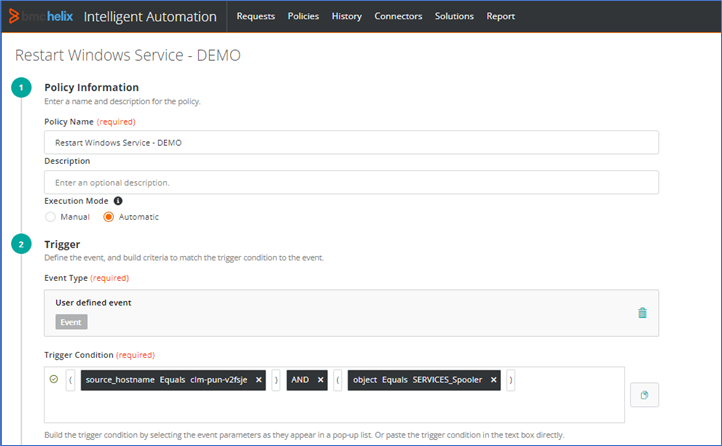

Click on “Select Action” to get the page below.

Remember to click on “Sync Actions.”
Next, you can search for “Event_Orchestration Process Event” in the Search Actions field.

Follow the steps below to complete the policy configuration.
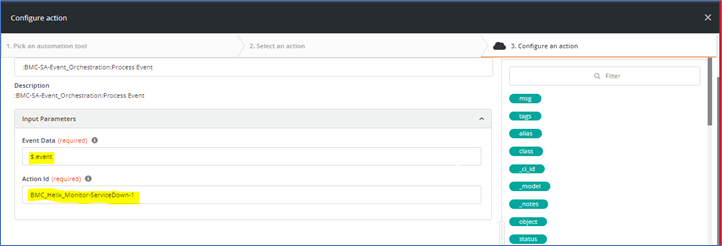
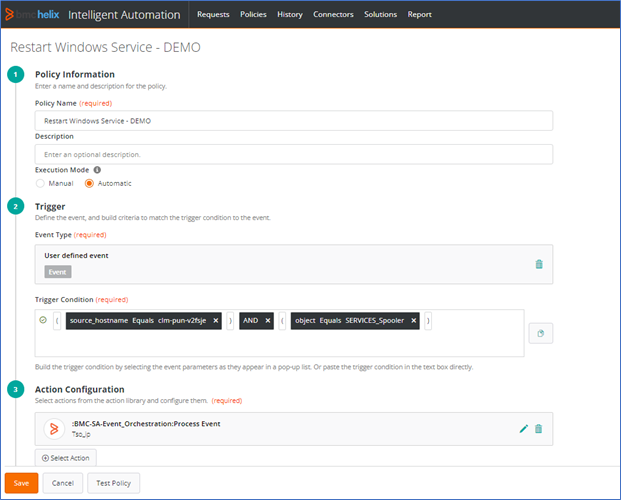
This completes the policy creation.
Please refer to the below link to download the presentation for this Blog Article.
We have recorded a Video showing the working of this Use Case and required configuration. This can be obtained upon request through email to the Authors.
Conclusion
Enterprise applications require these workflows to identify and remediate critical events happening in their infrastructure. This use case help organizations manage the end-to-end infrastructure in an effective way with the least impact to the business.

